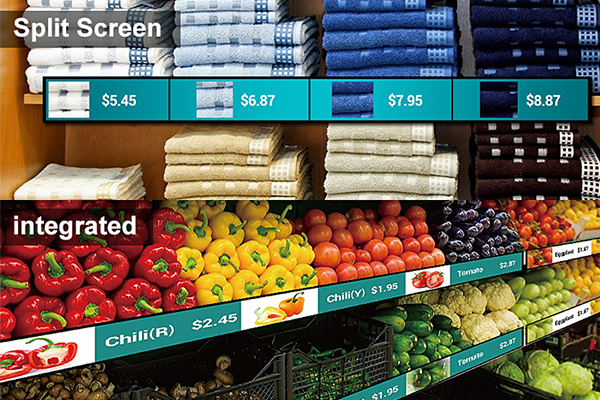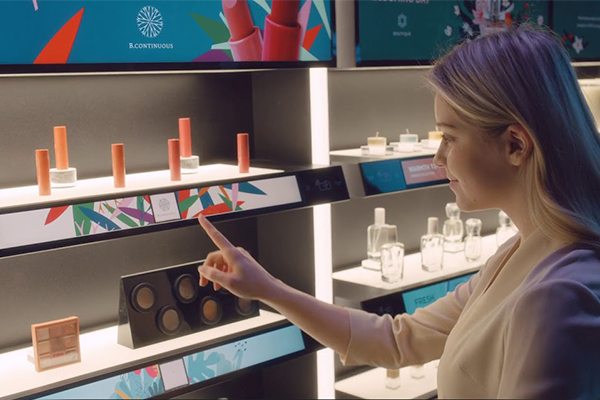Creating an engaging shopping experience is now more important than ever, as consumers have a variety of options when it comes to purchasing products. One way retailers can create an immersive in-store experience is by leveraging digital signage technology. By integrating digital displays into a retail space, retailers can showcase their products in new ways, entertain and inform customers, and ultimately drive sales.

Understanding the Power of Visual Communication
Visual content has a profound impact on consumers, as it can evoke emotions, convey information, and influence decision-making. In fact, research shows that 93% of all human communication is visual. Effective visual communication relies on several psychological factors, including attention, perception, memory, and emotional response. By understanding these factors, retailers can design compelling digital signage content that resonates with their target audience.
Benefits of Retail Store Digital Signage
Enhancing Brand Awareness and Recognition
Retail store digital signage can help create a visually cohesive brand identity. Consistent branding across all touchpoints, including in-store displays, can increase brand recognition and recall. Additionally, digital signage allows retailers to showcase their product offerings and promotions in a visually appealing way.
Driving Customer Engagement
Dynamic and interactive digital displays can grab the attention of shoppers and entice them to explore products further. Personalized content, tailored to the customer's preferences and location within the store, can further enhance engagement and create a more personalized shopping experience.
Increasing Sales Conversion Rates
Well-designed digital signage can influence purchasing decisions by leveraging persuasive visuals. By showcasing complementary products or promoting limited-time offers, retailers can encourage impulse buys and upselling opportunities.
Improving In-Store Navigation
Digital signage can assist customers with wayfinding information, reducing perceived wait times and making the shopping experience more convenient. Entertaining content can also keep shoppers engaged while waiting in line or during other idle moments.
Types of Digital Signage for Retail Stores
Video Walls and Large-Scale Displays
Video walls and large-scale displays can create immersive shopping experiences that captivate customers. Utilizing high-resolution visuals, retailers can tell impactful stories that showcase their products and create an emotional connection with shoppers.
Interactive Touchscreens and Kiosks
Interactive touchscreens and kiosks empower customers with product information and reviews, enabling self-service options and virtual assistance. This technology is particularly useful in high-traffic areas of the store, where sales associates may be busy assisting other customers.
Digital Menu Boards
Digital menu boards enhance the visual appeal in restaurants and cafes while also allowing for quick updates to menu items and prices in real-time. This technology can help improve operational efficiency while also creating a more engaging dining experience for customers.
Electronic Shelf Labels
Electronic shelf labels streamline pricing and inventory management, enabling dynamic pricing strategies and reducing manual labor costs. This technology can help retailers stay competitive by offering real-time pricing adjustments based on demand and other factors.

Designing Compelling Digital Signage Content
Engaging Visual Elements
Engaging visual elements are crucial when designing digital signage content. Using high-quality images and videos, incorporating eye-catching color schemes, and typography can help capture the attention of shoppers and convey the intended message effectively.
Tailoring Content to Targeted Audience
Personalizing messages based on demographics and preferences can make the content more relevant and useful for the intended audience. Leveraging data-driven insights can further optimize content for relevance and timeliness.
Optimizing for Different Display Formats
Adapting content for various screen sizes and orientations is essential to ensure readability and visibility from different viewing angles. Font size, contrast, and other formatting elements should be considered when designing content for digital signage.
Implementing and Managing Retail Store Digital Signage
Choosing the Right Hardware and Software
Evaluating display technologies and features and selecting user-friendly content management systems are essential steps in implementing retail store digital signage successfully.
Planning Signage Placement and Layout
Identifying high-traffic areas, considering store layout, and customer flow are critical when planning signage placement and layout. Proper placement can maximize exposure and enhance the impact of digital signage on customers.
Scheduling and Updating Content
Creating content calendars for seasonal promotions and events, implementing remote management capabilities, and efficient updates are essential when scheduling and updating content for retail store digital signage.
Monitoring Performance and ROI
Tracking audience engagement and conversion rates and analyzing data to optimize content and strategy can help ensure a positive return on investment in digital signage technology.
Best Practices for Retail Store Digital Signage
Keeping Content Fresh and Relevant
Regularly refreshing visuals and messages and staying updated with industry trends and customer preferences can help keep content fresh and relevant.
Maintaining Consistency Across Channels
Aligning digital signage with online and offline branding and coordinating promotions and messaging across platforms can enhance brand recognition and recall.
Ensuring Reliability and Technical Support
Implementing backup systems and redundancy measures, and establishing partnerships with reliable service providers, can help ensure the reliability and technical support of retail store digital signage technology.
Conclusion
Retail store digital signage has transformative potential, allowing retailers to captivate shoppers and drive business growth. By understanding the power of visual communication, leveraging various types of digital signage, designing compelling content, implementing and managing the technology effectively, and following best practices, retailers can create an immersive shopping experience that engages customers, enhances brand awareness, and increases sales conversion rates.
Retailers must carefully consider various factors when choosing this technology and follow best practices for successful implementation. Cooperate with Screenage, embracing the power of captivating visuals, staying ahead in the competitive retail landscape.
Post time: Oct-09-2023





